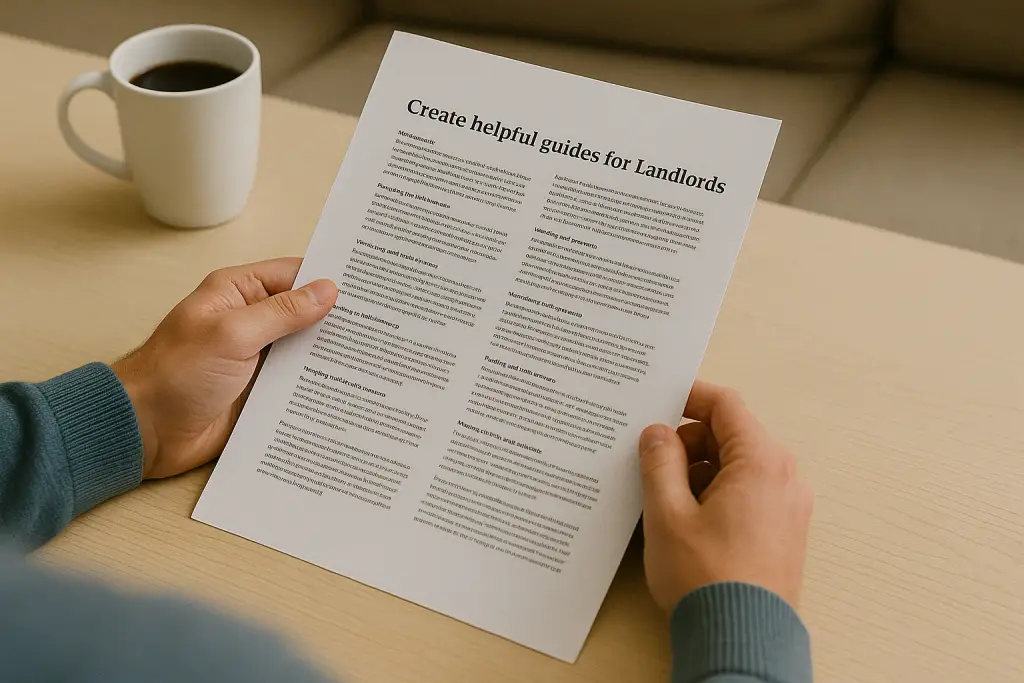5 Content Marketing Ideas Estate & Letting Agents Can Use to Attract More Landlords and Vendors

If you’re an estate agent or letting agent looking to grow your portfolio, you’ve probably noticed these three unalienable truths.
Landlords and Vendors are not as easy to attract as tenants or buyers
Your current marketing has poor penetration with your intended audience.
Each marketing strategy that you employ has a diminishing return on investment
Landlords and Vendors are some of the most demanding clientele, as they do their homework. They want to know and feel confident in the professionals that they choose to work with.
So, How do you position yourself as the go-to-agent in your area for clients looking to sell or let? One-word
Content
Content marketing is one of the most powerful tools agents have at their disposal today. BUT only if it’s done strategically. It’s not about posting the occasional property listing on social media or writing a blog once every few months. It’s about creating content that builds trust, demonstrates expertise, and keeps your agency top-of-their mind until the moment they’re ready to act.
Here are five content strategies I recommend to agents who want to stand out and start attracting more landlords and vendors through their marketing.

1. Share Local Market Insights That Matter
Let’s start with what every landlord and vendor wants to know: what’s happening in the market right now?
Whether they’re deciding whether to sell or wondering how competitive the rental market is, data-driven local updates are a goldmine for content.
Try this:
- Publish a monthly blog or newsletter titled something like, “What’s Happening in the [Your Area] Property Market – April 2025 Update.”
- Include stats on average selling prices, time on market, rental yields, and demand in your patch.
- Add your own commentary: What trends are you seeing? What should landlords or vendors be thinking about right now?
You could even repurpose these into quick social videos or LinkedIn posts. It’s all about consistently demonstrating that you are the local expert.
2. Use Case Studies to Show, Not Just Tell

You can say you’re great at selling homes or managing lets — but nothing beats showing people real-life examples.
Case studies and success stories build trust and credibility. They also give potential clients a sneak peek into what working with you looks like.
Structure it like this:
- The challenge: What was the landlord or vendor struggling with?
- The solution: What strategy did your agency use?
- The result: Letting the property in 3 days? Sale at 10% over asking? Highlight those numbers.
- Bonus: Include a client quote if you can — social proof is marketing rocket fuel.
These stories are also fantastic for email marketing, social media, and even printed brochures.

3. Create Helpful Guides for Landlords and Sellers
One of the most effective ways to get in front of potential clients is by offering genuinely useful resources that answer their most pressing questions.
When someone Googles “how to rent out a property in [town]” or “what do I need to do before selling my house,” wouldn’t it be nice if your website popped up?
Some winning guide ideas:
- “The Ultimate Guide to Letting Out Your Property in [Area]”
- “Selling Your Home in 2025 – What You Need to Know”
- “Landlord Checklist: 10 Things to Do Before You Let Your Property”
Keep it jargon-free and easy to digest. Even better — offer it as a free download in exchange for an email address. This way, you’re building a mailing list of warm leads you can nurture.
4. Take People Behind the Scenes

Content isn’t just about facts and figures — it’s also about building a connection. Vendors and landlords want to know who they’re working with. What makes you different? What’s your process? Why should they trust you with their most valuable asset?
Behind-the-scenes content is great for this. It’s authentic, engaging, and helps potential clients feel like they already know you.
Try this kind of content:
- A video tour of how you prep a property for sale or rent
- A “day in the life” of your team
- A Reel or TikTok showing your marketing process in action (photography, staging, listing)
It’s great for Instagram, Facebook, YouTube Shorts — and even your blog if you embed the video and write a few lines of context.

5. Answer the Questions They’re Already Googling
If you want your content to show up when landlords or vendors are searching for advice, SEO-focused blog posts are key.
Think about the questions you get asked all the time — and turn them into search-friendly blog posts.
Examples:
- “Do I Need a Letting Agent or Can I Do It Myself?”
- “What’s the Best Time of Year to Sell My House?”
- “How Much Tax Will I Pay as a Landlord in 2025?”
Write in a natural, conversational tone — like you’re chatting to a client over coffee. Make sure the titles are clear, the posts are skimmable, and you include a call to action at the end (e.g., “Want to know what your rental property could earn? Get a free valuation here.”)
You don’t need to do all of these things at once. The key is consistency. Choose one or two strategies that feel achievable, and build from there. Maybe you start by writing a simple monthly market update and sharing a recent success story on LinkedIn. That alone puts you ahead of most of your competitors.
But that is not why you are here today!


